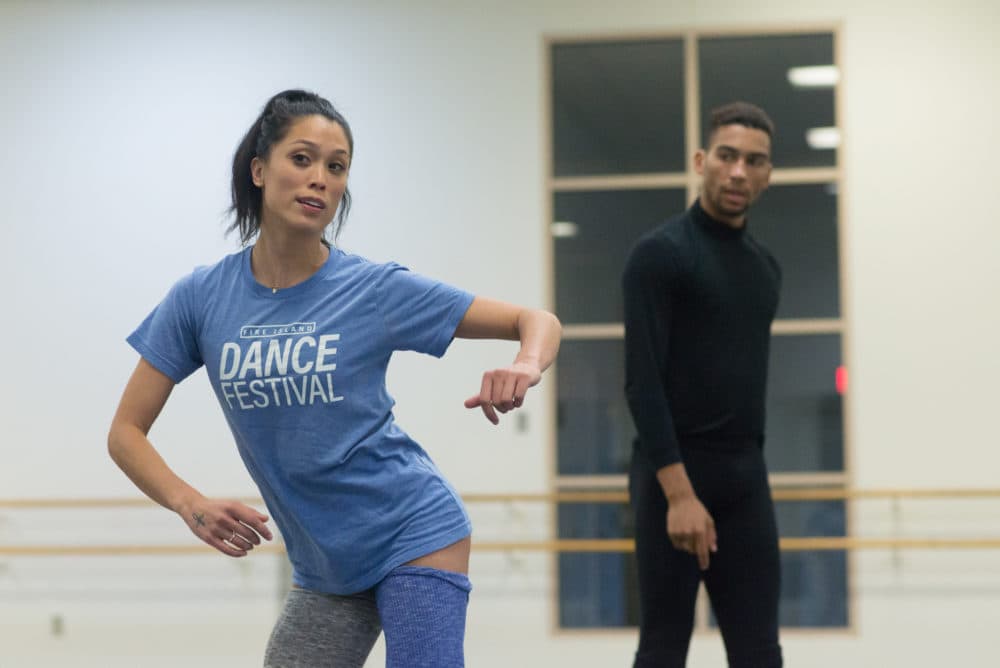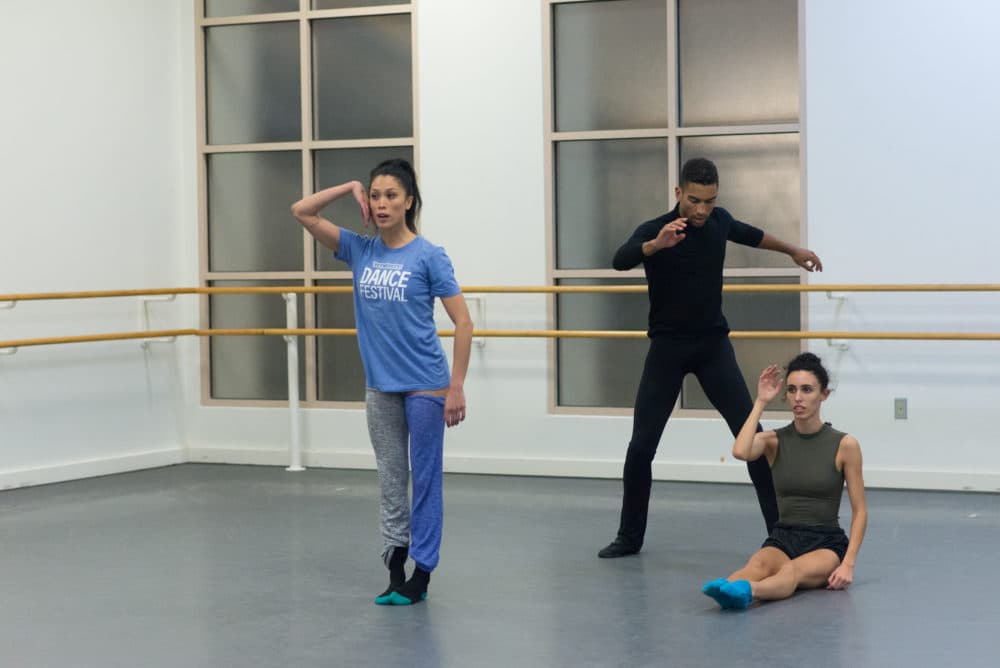Advertisement
Boston Ballet Aims To Develop Women Choreographers In Male Dominated Art Form
Resume
At a recent evening practice, Boston Ballet principal dancer Lia Cirio directed a group of fellow dancers. She stood at the front of the room — a notebook in hand and determination on her face — and skimmed through notes she took during the last practice to fine-tune a performance. Then she set down the notebook and talked with the dancers, complimenting them and at times correcting their motions.
Cirio has been with the company since 2003 and this fall choreographed for the first time as part of the company's new initiative aimed at developing more women choreographers.
For centuries, the ballet world has been dominated by male choreographers — a tradition ingrained in the art form to this day. While women choreographers have thrived in contemporary dance, women choreographers in classical dance forms remain strikingly underrepresented.
There have been efforts to right the wrong. This year, the American Ballet Theatre in New York implemented a long-term program that will stage works by women choreographers every season.
Boston Ballet announced this month a multi-year initiative, called ChoreograpHER, meant to give women the tools to learn choreography.
For Cirio, choreographing was a craft she said she never thought she would try, as she had a hard time coming up with improvisations in class. “It's kind of hard to believe that I'm at the front of the room calling the shots and being like, 'Do this more,' and things like that,” Cirio said of the new experience. “I never thought it’d happen, but here I am and I'm loving it.”
She, along with five other female choreographers — most of them new to the craft — debuted new pieces in November, selling out two shows.
Under ChoreograpHER, the Boston Ballet School will offer choreographic workshops for 16 to 18-year-old girls. In the studio, the company will also provide choreographic workshops open only to women over the next two years. The goal is for Boston Ballet to produce a show for the 2020-2021 season with a majority of women choreographers, musical directors, stage designers and visual artists.

For Cirio, the dedication from the company is heartening. “It's pretty incredible that they are committing to such an empowering thing,” she said. “I think it will change how this generation of ballet goers, of people in charge of companies, look at women choreography.”
The company’s director Mikko Nissinen said he started ChoreograpHER as an antidote to the underrepresentation of women in choreography. He noticed very few of them signed up for Boston Ballet’s choreographic workshops so he decided to close some workshops to men. Nissinen wanted the initiative to be a somewhat low-pressure, low-stakes introduction to a new artistic medium for the women participating.
“It takes courage,” Nissinen said of choreographing. “It's a very scary process. You're very exposed in a situation … because being a choreographer, first you have to know that that's what you want to do, but how do you know if you never try?”
The dearth of women choreographers is as old as ballet itself, with men historically serving as choreographers and women as their strong, dancerly muses. Centering women choreographers in ballet not only allows their perspectives to shine through, but it has the potential to shift the culture of the art form and to advance it.
“I think with the climate of today, this is exactly what the ballet world needs,” Cirio said. “I'm so excited to see the other women's pieces and just have that camaraderie together.” It's a camaraderie men have enjoyed for centuries.

Boston Ballet School remains one of the oldest classical dance schools in the country and Nissinen hopes ChoreograpHER can serve as a model for other legacy institutions.
“In the past, in our industry, there's been a couple [of] incredible female choreographers,” Nissinen said. “From Pina Bausch to Agnes de Mille to Bronislava Nijinska. But it has been a much more male-dominated industry from the choreographer's point of view.”
For Cirio, who’s been dancing since she was 3 years old, trying choreography felt risky but exciting and important.
“It's kind of very vulnerable,” Cirio said. “You kind of give everything to your dancers, to the audience, to the music and then you step away and you're not a part of it anymore. And you just get to trust the dancers and trust your process and see what happens. You know it could fail, but I'm glad I tried.”
While few women in classical dance have been able to pave their way into choreography, Boston Ballet hopes to make the road a little wider.
This segment aired on November 28, 2018.
